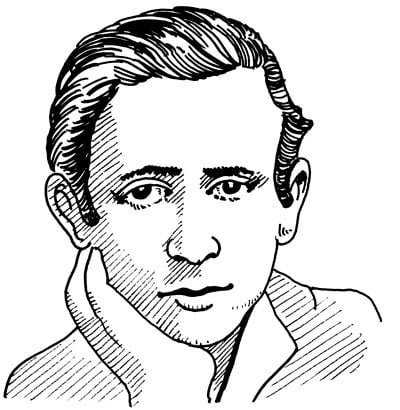
Guglielmo Marconi was born at Bologna, Italy, on April 25, 1874. He was educated privately at Bologna, Florence and Leghorn. Even as a boy he took a keen interest in physical and electrical science and studied the works of Maxwell, Hertz, Righi, Lodge and others. In 1895 he began laboratory experiments at his father’s country estate where he succeeded in sending wireless signals over a distance of one and a half miles.
In 1896 Marconi took his apparatus to England where he was introduced to Mr. (later Sir) William Preece, Engineer-in-Chief of the Post Office, and later that year was granted the world’s first patent for a system of wireless telegraphy. He demonstrated his system successfully in London, on Salisbury Plain and across the Bristol Channel, and in July 1897 formed The Wireless Telegraph & Signal Company Limited (in 1900 re-named Marconi’s Wireless Telegraph Company Limited). In the same year he gave a demonstration to the Italian Government at Spezia where wireless signals were sent over a distance of twelve miles. In 1899 he established wireless communication between France and England across the English Channel. He erected permanent wireless stations at The Needles, Isle of Wight, at Bournemouth and later at the Haven Hotel, Poole, Dorset.
In 1900 he took out his famous patent No. 7777 for ‘tuned or syntonic telegraphy’ and, on an historic day in December 1901, determined to prove that wireless waves were not affected by the curvature of the Earth, he used his system for transmitting the first wireless signals across the Atlantic between Poldhu, Cornwall, and St. John’s, Newfoundland, a distance of 2100 miles.
Between 1902 and 1912 he patented several new inventions. In 1905 he patented his horizontal directional aerial and in 1912 a ‘timed spark’ system for generating continuous waves.
In 1914 he was commissioned in the Italian Army as a Lieutenant being later promoted to Captain, and in 1916 transferred to the Navy in the rank of Commander.
During his war service in Italy he returned to his investigation of short waves, which he had used in his first experiments.
In 1931 Marconi began research into the propagation characteristics of still shorter waves, resulting in the opening in 1932 of the world’s first microwave radiotelephone link between the Vatican City and the Pope’s summer residence at Castel Gandolfo. Two years later he demonstrated his microwave radio beacon for ship navigation and in 1935, again in Italy, gave a practical demonstration of the principles of radar, the coming of which he had first foretold in a lecture to the American Institute of Radio Engineers in New York in 1922.
He has been the recipient of honorary doctorates of several universities and many other international honours and awards, among them the Nobel Prize for Physics, which in 1909 he shared with Professor Karl Braun.
Marconi died in Rome on July 20, 1937.

